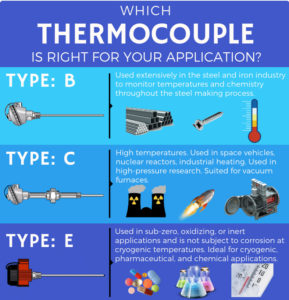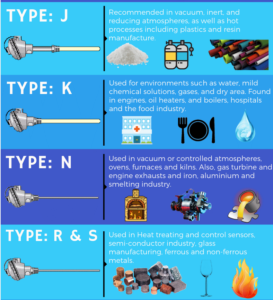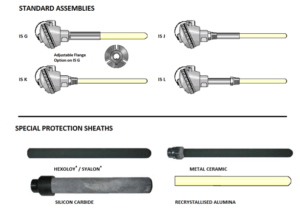1300 737 976
Call us
Live Chat
Call us
How do you protect your thermocouples in high temperature processes?

Contact thermometry is still the most successful means of measuring temperatures to enable control of industrial processes. Its success is, however, largely dependent on how well the sensing element is protected from the process environment.

For processes operating at temperatures above 1000oC it has been common practice for platinum-based thermocouples (Types R, S & B) to be used. With the improvement in performance of mineral insulated thermocouples, more specifically the NicrobellÒ sheathed type N mineral insulated thermocouples, industry has been given in many instances an alternate to the platinum-based thermocouples up to temperatures of 1200oC to 1250oC.
OPERATING ABOVE 1250oC
Once above this threshold temperature of 1250oC the only choice in contact thermometers for industry is to use platinum-based thermocouples. Typically, these are installed in ceramic sheaths made from recrystallised alumina (Alsint, Rubalit, AL23 or KER 710). A common practice in many industries, where temperatures are not excessively high, is to use aluminous porcelain (Pythagoras, Dimulit or KER 610) because the cost of the sheaths and insulators is substantially less than that of recrystallised alumina. This practice is certainly not recommended as aluminous porcelain contains free silica which will poison the platinum thermocouple. Aluminous porcelain is also high in free Na2O3 (soda), which in combination with the slightest trace of reducing agent will cause the platinum and aluminous porcelain to interact. It should also be noted that recrystallised alumina has a much greater thermal conductivity than aluminous porcelain allowing the thermocouple to respond quicker to changing temperatures.

In many applications ceramic thermocouple protection sheaths are not able to withstand the process environment. Recrystallised alumina, by nature of its construction is very prone to thermal shock and must be preheated before installing in an operating process.
HEXOLOY Ò SA
It is well known that Silicon Carbide affords excellent resistance to erosive and chemical attack in reducing atmospheres. Its use as a heating element also confirms its suitability for use in high temperature applications. In its standard form, though, because it contains free silica, it is readily attacked in strong oxidising environments.
With the development of Hexoloy SA sintered silicon carbide, a silicon carbide material with no free silica now offers superior chemical resistance in both reducing and oxidising environments.
The properties of Hexoloy SA make it an ideal candidate for thermocouple protection sheaths: –
Areas where Hexoloy SA has been successfully used include: – mineral processing, non-ferrous melting, and refining, high temperature process furnaces, chemical incinerators, recuperators, and corrosive chemical processing streams. Its high temperature capabilities have made it extremely effective in the coal processing industry, including gasification at temperatures above 1600oC.
METAL CERAMIC (LT-1)

It has high thermal conductivity and is superior to ceramics in thermal shock capabilities but should still be preheated before immersion into molten metals.
It is recommended for use in the following process environments: –
As the chromium phase becomes reactive at elevated temperatures metal ceramics are not recommended for use in carburising or nitriding atmospheres, or in molten aluminium. It has a maximum continuous temperature rating of 1400oC.
CONCLUSION
While there may not be an ideal protection sheath for every process environment, Pyrosales will select, after analysis of the process conditions, the most suitable thermocouple/sheath combination to best suit the needs of the customer. By this the customer can be assured that the most cost-effective solution to their temperature sensing problems has been applied.
Pyrosales engineers are available to consult on various stages of any project, from the development and planning of a new project to modifying or upgrading an existing facility. Our staff is here to provide you with assistance and recommendations to ensure the best outcome and value. We are happy to visit our clients on-site or conduct meetings from one of our offices.
FOR MORE INFORMATION CONTACT US
Copyright © 2022 Created by Pepper Digital
Disclaimer – Images for illustrative purposes only and may not be representative of the actual resolution of the camera shown.